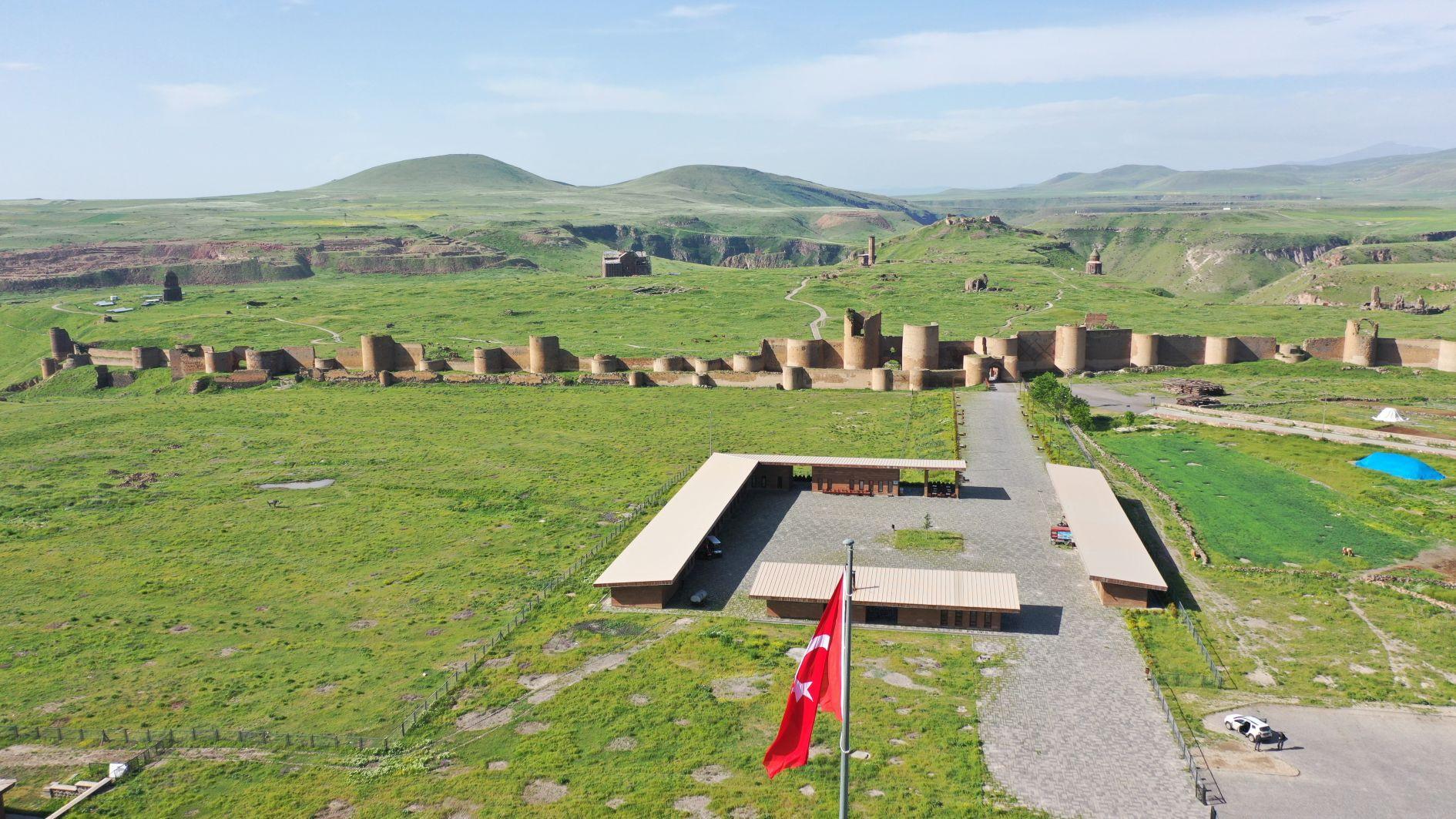
The ancient city of Ani, located in the eastern province of Kars and recognized as a UNESCO World Heritage site since 2016, continues to impress visitors with its massive city walls, nearly 5 kilometers of which still stand strong after more than 1,000 years.
Situated in a valley carved by the Arpaçay River, Ani was once ruled by the Bagratid dynasty between 884 and 1045, followed by the Byzantines until 1064, when it was conquered by Seljuk Sultan Alp Arslan.
Once a metropolis built over a 100-hectare area, Ani hosted a succession of civilizations, including the Bagratids, Byzantines, Seljuks, Georgians, Mongols, Ilkhanids, Karakoyunlus, Akkoyunlus and the Ottomans.
Due to its diverse history, Ani is often called the “City of 1001 Churches,” the “City of Forty Gates,” the “Cradle of Civilizations” and a true “World City.”
The site features a number of cultural and religious structures such as mosques, churches and cathedrals, attracting large numbers of domestic and international tourists each year. Historically known as the first gateway from the Caucasus into Anatolia, Ani also stands out for its remarkable examples of 11th and 12th century Turkish-Islamic architecture.
The city’s imposing fortifications, some of which were built as double-layered walls, reflect the artistry and architectural sophistication of the time, bearing engravings that offer clues about the civilizations that once inhabited the region.
An important city in the Middle Ages
Speaking to the state-run Anadolu Agency, Associate Professor Muhammet Arslan, the head of the Ani Excavation Project, emphasized Ani’s significance as one of the most important medieval cities, with many architectural remnants still buried underground awaiting excavation.
Arslan explained that the fortifications date back to the 9th century during the Bagratid period. “We know that the walls suffered their greatest damage during the battle between Sultan Alp Arslan and the Byzantine army in 1064,” he said. “One of the sultan’s first acts after the conquest was to restore and rebuild the walls. An inscription placed on the Lion Gate, widely recognized as the first Turkish-Islamic inscription in Anatolia, documents this restoration.”
Despite the passage of nearly a millennium, the Ani walls still retain their monumental presence and resilience. Arslan noted that the northern section of the walls, which opens to the plains, was constructed as a double-layered structure, while the walls along the Arpaçay, Mığmığ and Bostanlar streams were built as single-layered due to the terrain — stretching nearly five kilometers in total.
He also highlighted the seven gates built into the fortress walls. “The most significant of these is the Lion Gate, the primary entrance into Anatolia and Kars. Just west of it lies the Double-Tower Gate and the Secret Gate, also known as Uğurun Gate. To the east, we find the Satrançlı or Hıdırellez Gate, which features dragon and bull motifs on its towers — hallmarks of Turkish artistic symbolism,” he said.
Continuing eastward, the Mığmığ Stream Gate, Bağ Sekisi Gate and Divin Gate complete the circuit of Ani’s walls. Arslan stressed the importance of the Divin Gate in particular. “Located right on the current Armenian border, this gate faces the medieval Seljuk city of Divin, hence its name. Remarkably, it remains largely intact today,” he added.